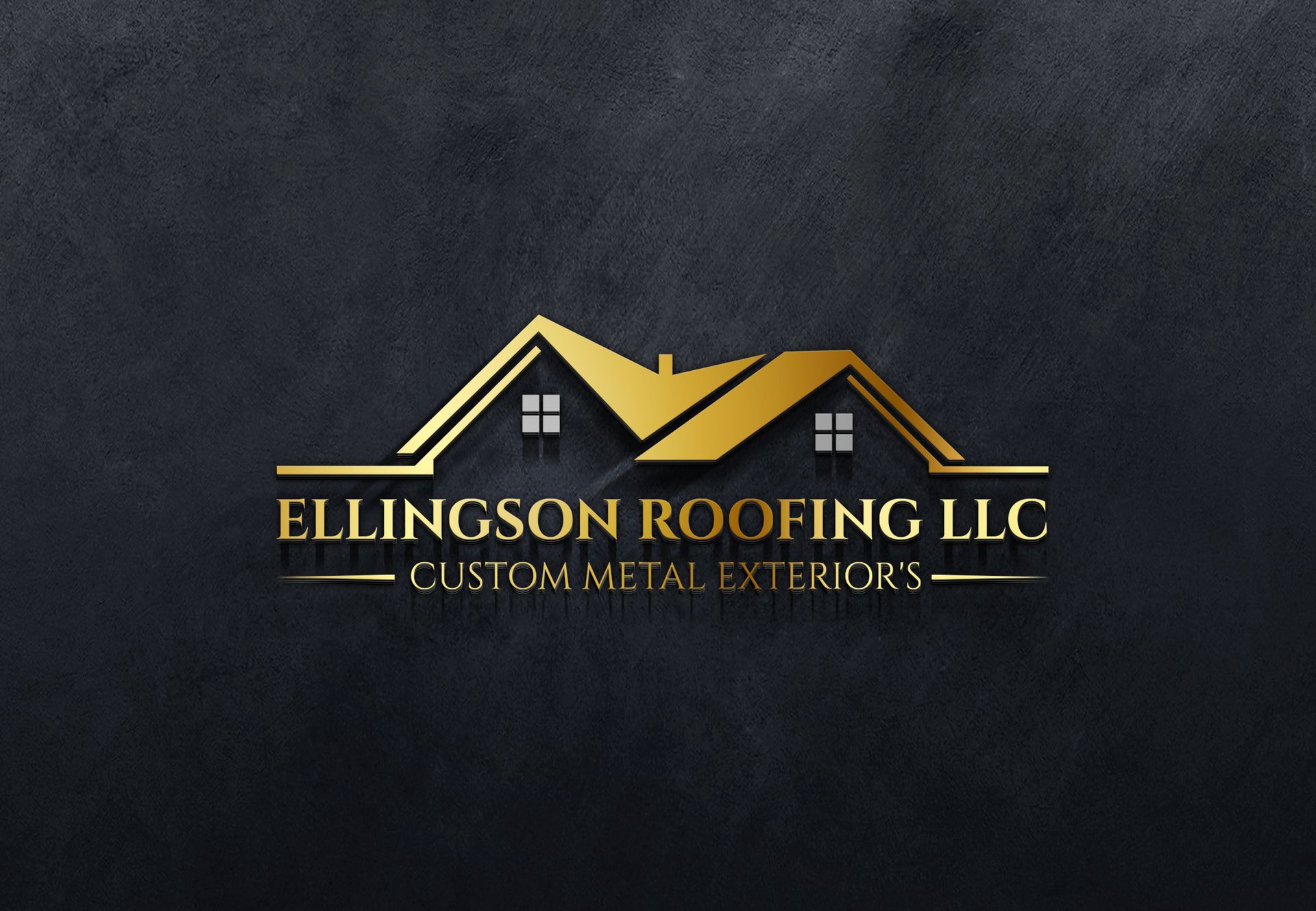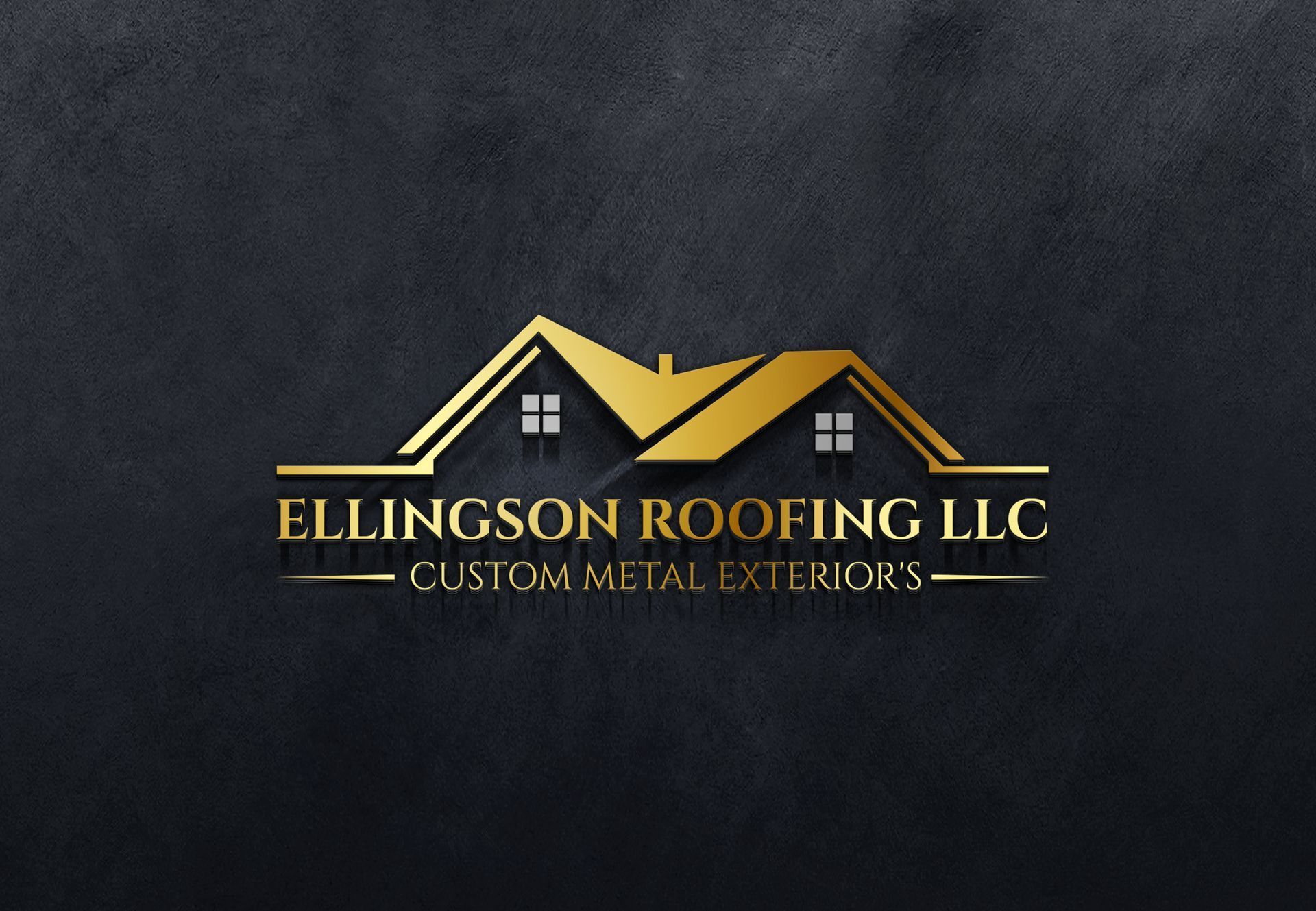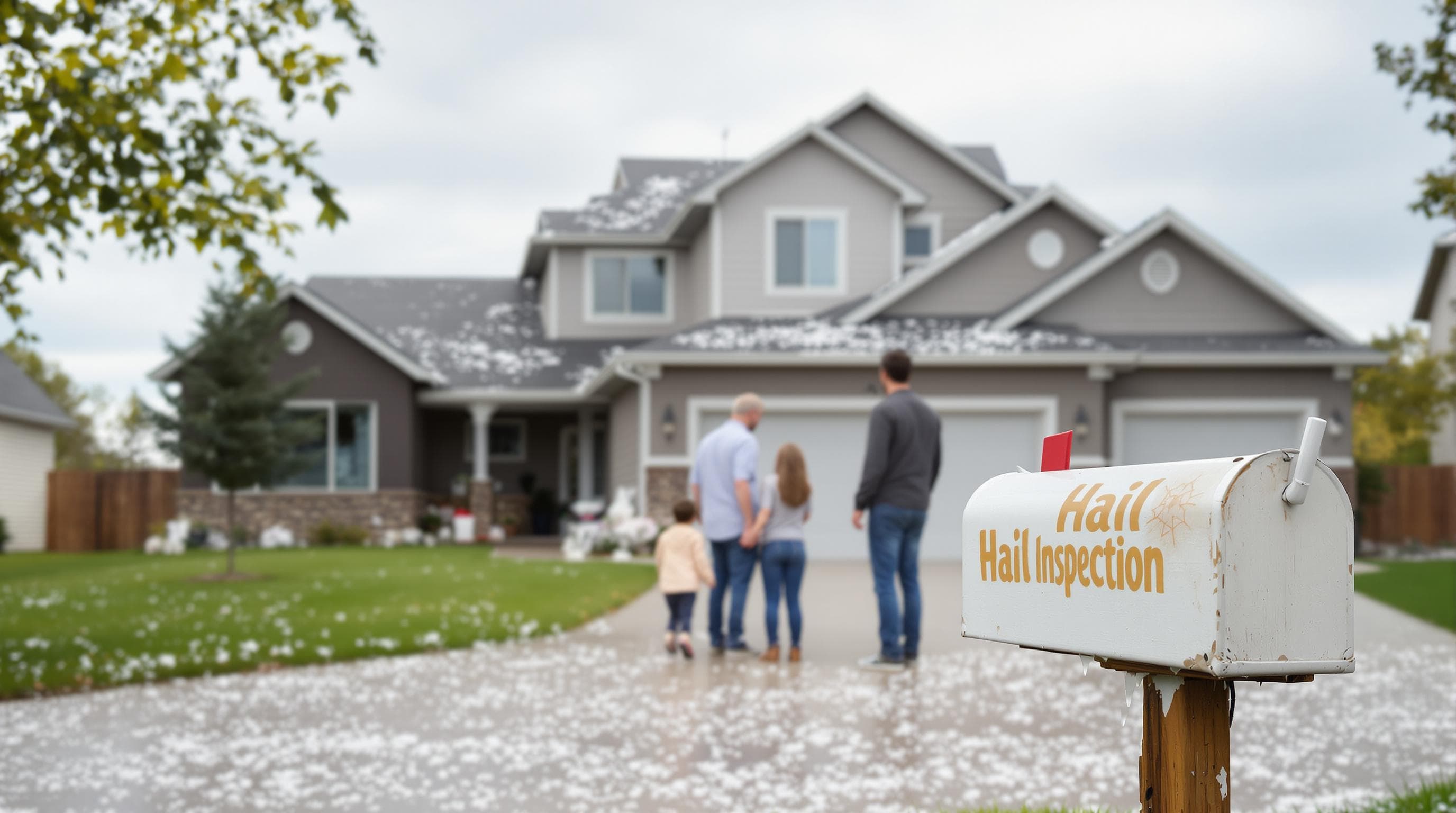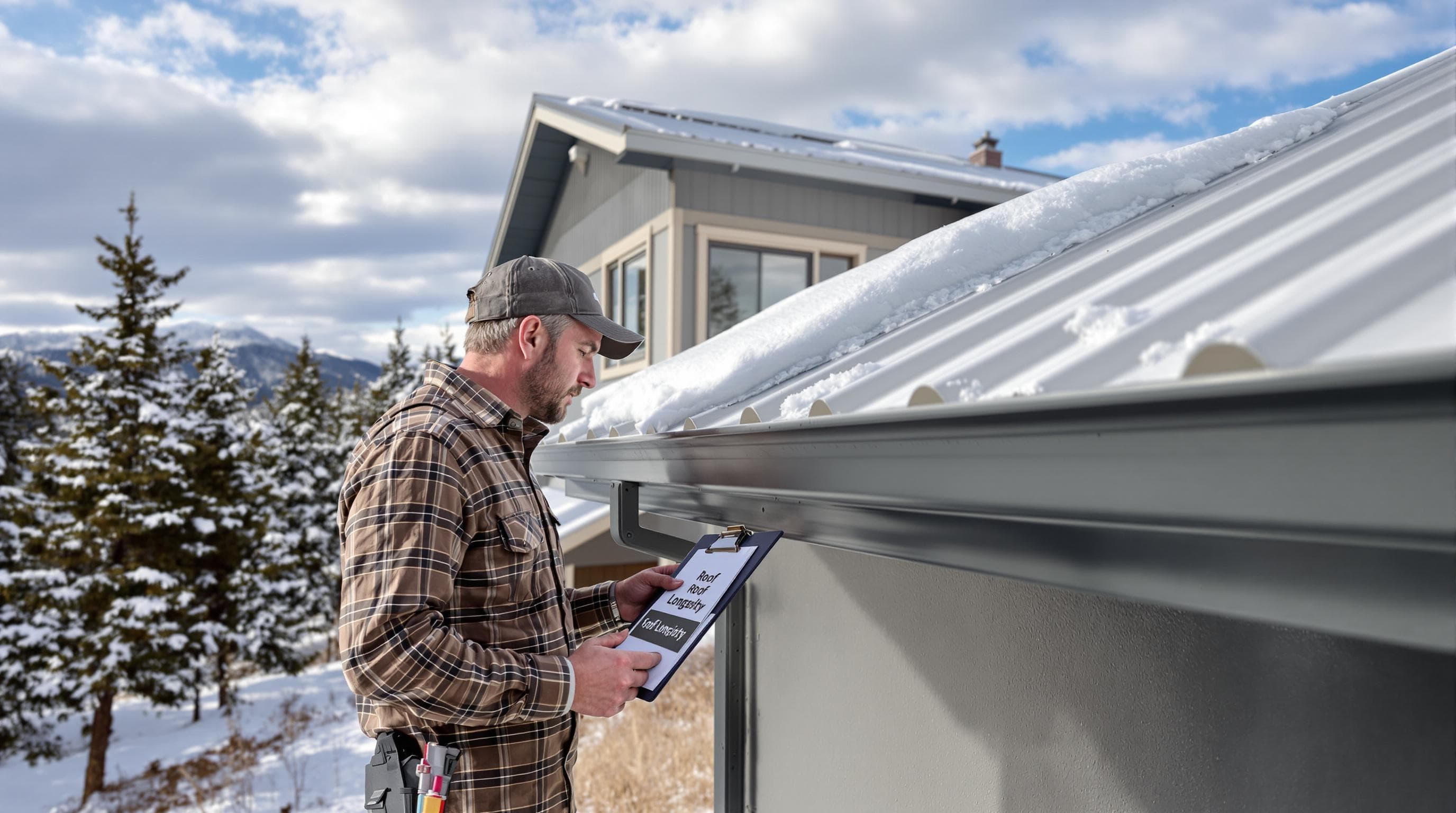Environmental Benefits of Metal Roofing in Helena & Montana (2025 Guide)
Contact Us
Environmental Benefits of Metal Roofing in Helena & Montana (2025 Guide)
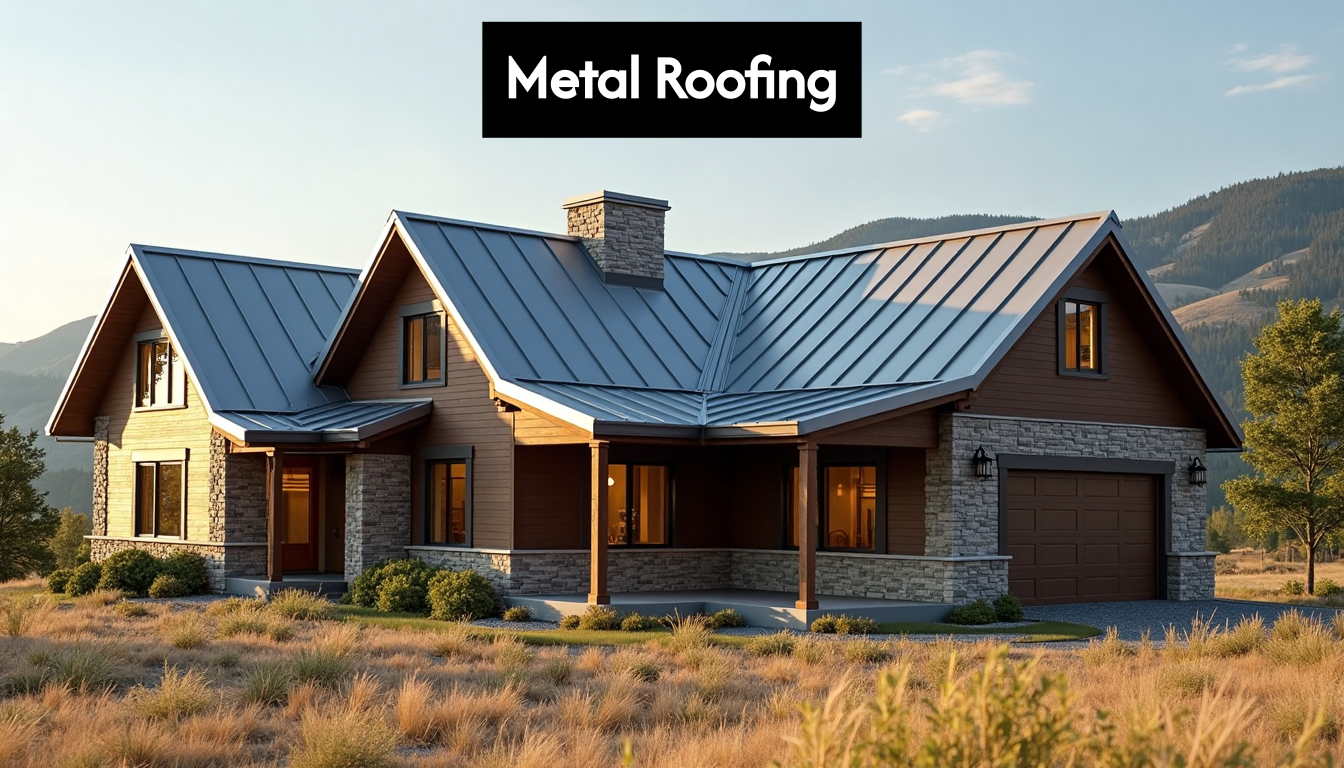
Metal roofing is changing the game for homeowners and businesses across Montana. Some expect environmental building choices to be pricey or impractical, but the facts tell a different story. Metal roofs can cut cooling costs by up to 25 percent and last two to three times longer than traditional shingles, which means lower bills and less waste filling up local landfills. The most surprising part is that these roofs are as tough as they are eco-friendly, handling wind speeds up to 140 miles per hour and shrugging off Montana’s wild weather. Here is what makes metal roofing one of the smartest choices for anyone who wants to go green and stay protected.
Table of Contents
Quick Summary
| Takeaway | Explanation |
|---|---|
| Energy Efficiency | Metal roofing can reduce cooling costs by up to 25% through advanced thermal reflection, significantly lowering the carbon footprint of homes. |
| Sustainability Through Recycling | Most metal roofing materials contain 25% to 95% recycled content and can be fully recycled at the end of their lifespan, minimizing landfill waste. |
| Extreme Weather Resilience | Metal roofing can withstand wind speeds up to 140 miles per hour and provides excellent impact resistance, making it ideal for Montana’s variable climate. |
| Long Lifespan and Cost Savings | With a lifespan of 50 to 70 years, metal roofing reduces the need for replacements, maintenance, and repairs, offering substantial long-term economic benefits. |
| Snow and Ice Management | The smooth surface of metal roofs aids in the natural shedding of snow and ice, preventing dangerous accumulation and potential structural damage during winter. |
How Metal Roofing Supports a Greener Montana
Metal roofing represents a powerful solution for environmentally conscious homeowners and businesses in Montana, offering substantial ecological advantages that extend far beyond traditional roofing materials. By choosing metal roofing, property owners can actively contribute to sustainability efforts while simultaneously protecting their investments.
Energy Efficiency and Thermal Performance
Metal roofing dramatically reduces energy consumption through advanced thermal properties. Unlike traditional asphalt shingles, metal roofs reflect solar radiation, preventing heat absorption and maintaining cooler indoor temperatures during Montana’s intense summer months. Energy Star reports that metal roofing can reduce cooling costs by up to 25%, significantly lowering a home’s carbon footprint.
The reflective capabilities of metal roofing create a natural cooling effect. Special coatings and pigments enhance this performance, allowing roofs to reflect up to 70% of solar radiation. This means less energy is required to maintain comfortable indoor temperatures, translating directly into reduced electricity consumption and lower greenhouse gas emissions.
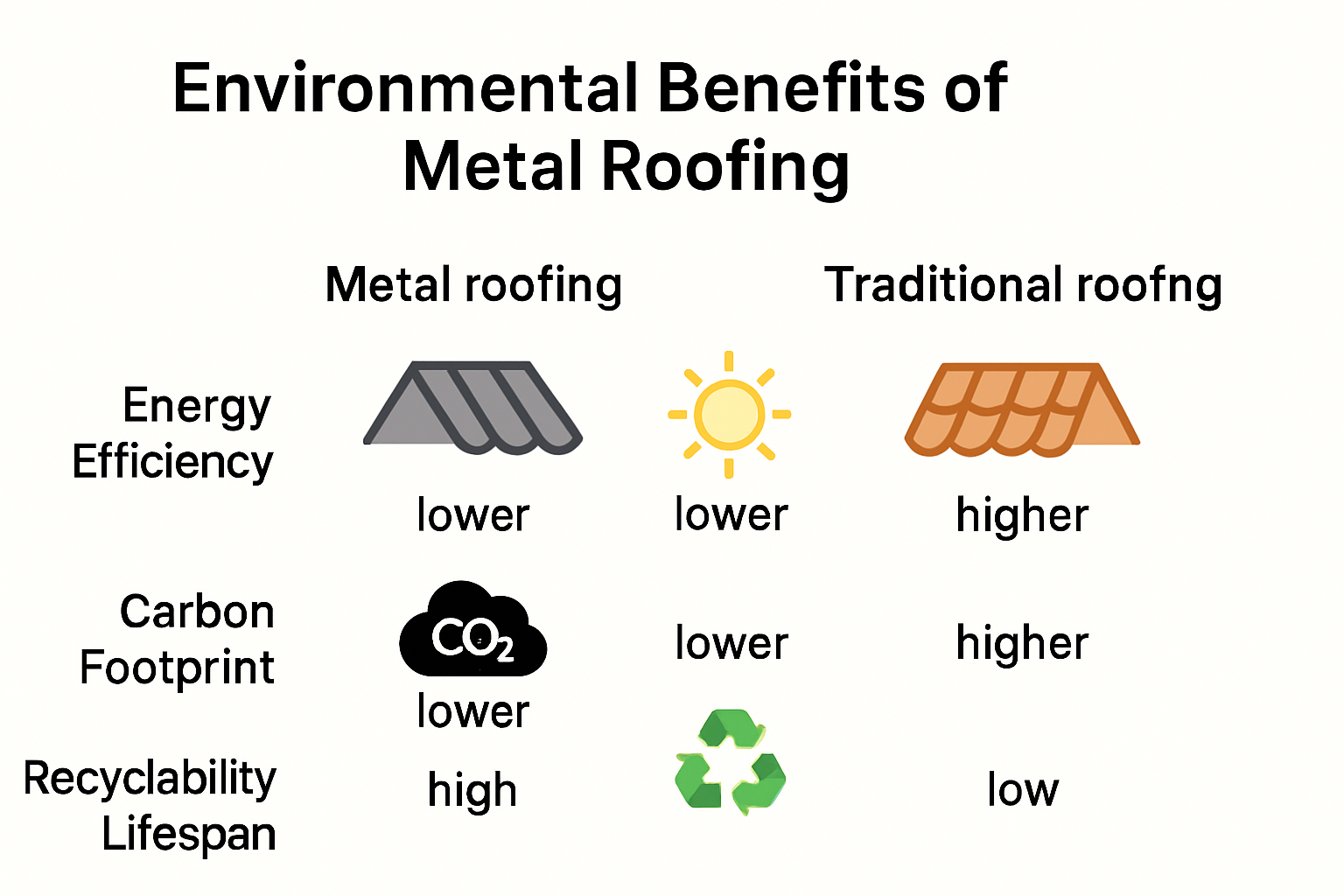
Sustainable Material Lifecycle
The environmental benefits of metal roofing extend well beyond energy efficiency. Metal roofing materials are predominantly recyclable, with most containing 25% to 95% recycled content. Environmental Protection Agency research indicates that metal roofing can be completely recycled at the end of its lifecycle, unlike asphalt shingles which typically end up in landfills.
Typical metal roofing systems have an impressive lifespan of 50 to 70 years, which is two to three times longer than traditional roofing materials. This extended durability means fewer resources are consumed in manufacturing replacement roofs, further reducing environmental impact. The reduced waste and minimal maintenance requirements make metal roofing an exceptionally sustainable choice for Montana’s diverse climate conditions.
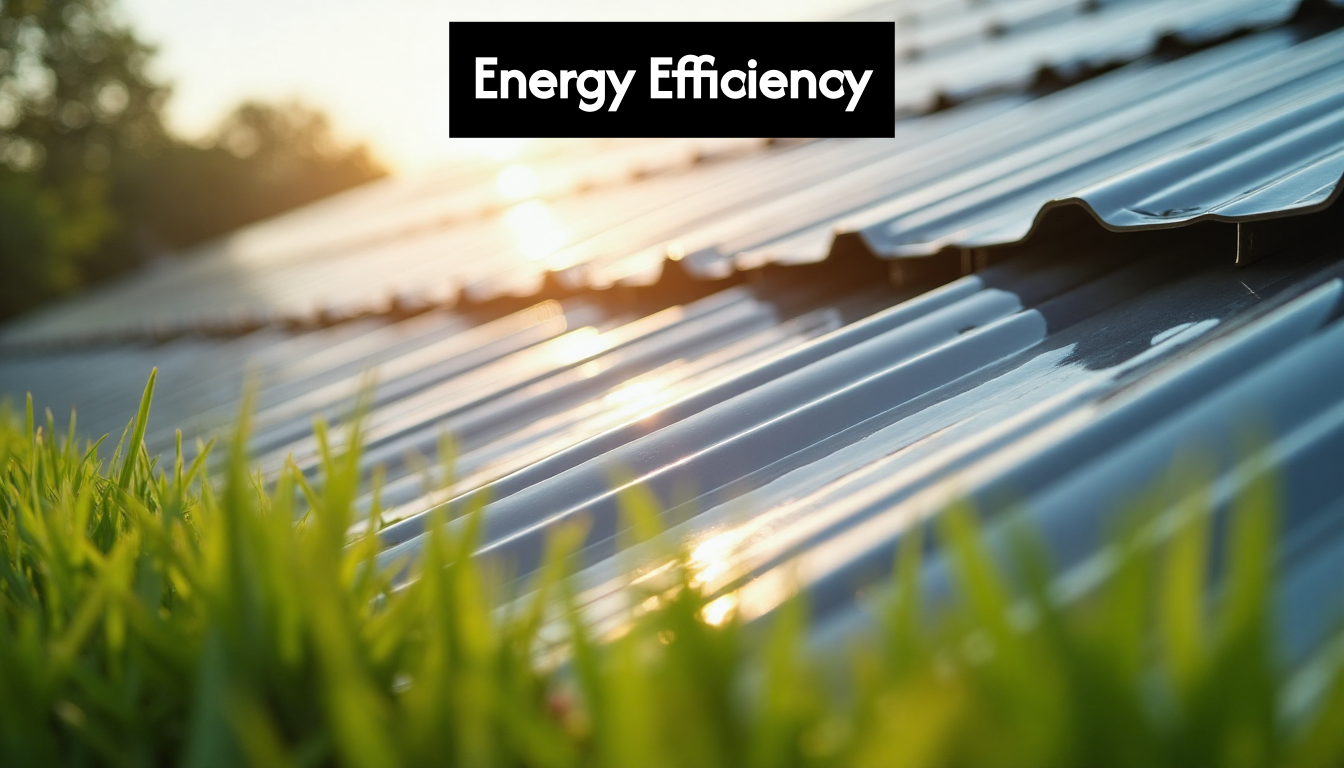
Climate Resilience and Natural Resource Conservation
Metal roofing plays a crucial role in supporting Montana’s environmental sustainability by enhancing climate resilience. The material’s durability allows it to withstand extreme weather conditions, from heavy snowfall to intense summer heat, without degrading rapidly. This resilience means fewer resources are consumed in repairs and replacements.
Moreover, metal roofing supports water conservation efforts. Many metal roofing systems are designed to facilitate rainwater harvesting, allowing homeowners to collect and utilize precipitation for landscaping, gardening, and other non-potable water needs. This feature is particularly valuable in regions experiencing periodic drought conditions.
By choosing metal roofing Helena MT, Montana residents make a meaningful commitment to environmental stewardship. The combination of energy efficiency, recyclability, long-term durability, and climate adaptability positions metal roofing as a premier eco-friendly construction solution. Property owners who select metal roofing are not just protecting their buildings they are actively participating in a broader movement toward sustainable, responsible construction practices.
Energy Efficiency and Lower Utility Costs
Metal roofing emerges as a game-changing solution for Montana homeowners seeking substantial energy savings and reduced utility expenses. The unique thermal properties of metal roofing create a sophisticated system that actively manages heat transfer, delivering significant economic and environmental benefits.
Advanced Thermal Reflection Technology
Metal roofs utilize sophisticated reflective technologies that fundamentally transform how buildings manage heat. Lawrence Berkeley National Laboratory research demonstrates that cool metal roofing can reflect up to 70% of solar radiation, dramatically reducing heat absorption compared to traditional roofing materials. This reflective capability translates directly into lower indoor temperatures and reduced cooling demands.
Specialized coatings further enhance metal roofing’s thermal performance. These advanced pigments and treatments can reduce roof surface temperatures by up to 50 degrees Fahrenheit during peak summer months. For Montana homeowners, this means significant reductions in air conditioning usage and corresponding energy expenditures.
Comprehensive Insulation and Energy Savings
Beyond surface reflection, metal roofing systems create a comprehensive thermal management solution. Department of Energy studies indicate that properly installed metal roofs can improve overall building insulation by creating an additional thermal barrier. This integrated approach can reduce heating and cooling costs by 10% to 30%, depending on the specific installation and home characteristics.
The economic impact extends beyond immediate utility savings. Metal roofs provide exceptional long-term value through their durability and energy-efficient properties. Homeowners can expect reduced maintenance costs, fewer repairs, and a significant decrease in energy consumption over the roof’s extended lifecycle.
Climate-Specific Energy Performance
Montana’s unique climate presents distinctive energy challenges that metal roofing addresses exceptionally well. The material’s performance varies dramatically across seasonal temperature shifts, providing superior insulation during cold winters and effective heat reflection during hot summers. National Renewable Energy Laboratory research confirms that metal roofing systems can adapt more effectively to extreme temperature variations compared to traditional roofing materials.
Winter months benefit from metal roofing’s ability to prevent heat loss. The roof’s design allows for strategic air circulation and insulation, helping to maintain interior temperatures more efficiently. During summer, the reflective surface actively reduces heat gain, creating a more consistent and comfortable indoor environment.
The financial implications are substantial. Montana homeowners can anticipate annual utility savings ranging from $200 to $500, depending on home size and existing insulation. These savings represent not just an economic advantage but a meaningful contribution to reducing overall energy consumption and environmental impact.
By selecting metal roofing Helena MT, property owners make a strategic investment in energy efficiency. The technology goes beyond simple material selection, representing a comprehensive approach to thermal management that delivers tangible economic and environmental benefits. For Montana residents committed to reducing utility costs and supporting sustainable living, metal roofing stands as an exceptional solution.
Sustainability: Recycling and Long-Term Value
Metal roofing represents a pinnacle of sustainable construction materials, offering an extraordinary lifecycle that significantly reduces environmental impact while delivering exceptional long-term economic value for Montana property owners. The material’s unique characteristics transform traditional roofing from a disposable product to a renewable resource.
Comprehensive Material Recyclability
Metal roofing stands out as an extraordinary example of circular economy principles. Environmental Protection Agency research reveals that metal roofing materials contain between 25% to 95% recycled content, with nearly 100% of the material being recyclable at the end of its service life. Unlike asphalt shingles that typically contribute to landfill waste, metal roofing enters a continuous recycling loop.
The recycling process for metal roofing is remarkably efficient. Aluminum and steel roofing materials can be repeatedly melted down and repurposed without losing structural integrity or performance qualities. This means a single metal roof can potentially be transformed multiple times, dramatically reducing raw material extraction and manufacturing energy consumption.
Extended Lifecycle and Resource Conservation
Metal roofing’s durability represents a critical sustainability advantage. National Association of Home Builders indicates that metal roofs can last 50 to 70 years, compared to 15 to 25 years for traditional asphalt shingle roofing. This extended lifespan means significantly reduced material replacement, lower manufacturing demands, and minimized construction waste.
The long-term economic value is equally impressive. While initial installation costs might be higher than traditional roofing, metal roofs provide substantial financial benefits. Reduced maintenance requirements, lower energy costs, and extended durability translate to potentially tens of thousands of dollars in savings over the roof’s lifetime. Insurance companies often offer discounts for metal roofing due to its superior durability and fire resistance.
Environmental Impact and Resource Efficiency
Metal roofing’s sustainability extends beyond recyclability and longevity. U.S. Green Building Council research demonstrates that metal roofing contributes significantly to green building certifications by reducing overall construction environmental footprint. The lightweight nature of metal roofing means reduced structural load, potentially allowing for more efficient building designs and lower foundation requirements.
Additionally, metal roofing supports broader environmental conservation efforts. The material’s reflective properties reduce urban heat island effects, while its compatibility with solar panel installations creates opportunities for integrated renewable energy solutions. For Montana homeowners committed to environmental stewardship, metal roofing represents more than a construction choice it represents a comprehensive approach to sustainable living.
By selecting metal roofing, property owners make a powerful statement about environmental responsibility. The material transcends traditional roofing paradigms, offering a solution that balances ecological considerations with practical performance. As Montana continues to embrace sustainable practices, metal roofing emerges as a critical component in creating a more environmentally conscious built environment.
Metal Roofing and Storm Resilience for Montana Properties
Montana’s challenging climate demands robust building solutions, and metal roofing emerges as a premier defense against the Montana state’s most extreme weather conditions. From intense winter storms to summer hailstorms, metal roofing provides unparalleled protection for residential and commercial properties across the region.
Extreme Weather Performance
National Weather Service research confirms that metal roofing can withstand wind speeds up to 140 miles per hour, making it an exceptional choice for Montana’s volatile weather patterns. Unlike traditional roofing materials that can tear, crack, or blow away during severe storms, metal roofing maintains structural integrity under extreme conditions.
The interlocking design of metal roofing panels creates a continuous, seamless barrier that dramatically reduces the risk of water penetration and wind damage. This engineering approach means better protection against Montana’s notorious winter storms, which can bring combinations of heavy snow, ice, and powerful winds that would compromise traditional roofing systems.
Impact Resistance and Durability
Insurance Institute for Business and Home Safety studies demonstrate metal roofing’s exceptional ability to resist impact damage. Hailstorms that would destroy asphalt shingles typically result in minimal to no damage on metal roofs. This resilience is particularly crucial in Montana, where hail can cause significant property damage during summer months.
The material’s durability extends beyond immediate storm protection. Metal roofing maintains its structural integrity and aesthetic appearance after multiple severe weather events, reducing long-term maintenance costs and providing consistent protection. This means fewer repairs, reduced insurance claims, and greater peace of mind for property owners facing Montana’s unpredictable climate.
Snow and Ice Management
Montana’s winter conditions present unique challenges that metal roofing addresses remarkably well. The smooth surface and strategic installation techniques facilitate natural snow and ice shedding, preventing dangerous snow accumulation that can stress traditional roofing structures. Montana State University engineering research highlights the importance of roof design in managing snow loads, with metal roofing offering superior performance.
Specialized coatings and installation techniques allow metal roofs to efficiently manage snow and ice. The low-friction surface prevents snow from building up, reducing the risk of ice dams and potential structural damage. This is particularly important in regions experiencing heavy snowfall, where roof collapses can pose significant safety risks.
For Montana property owners, metal roofing represents more than just a protective covering. It is a comprehensive solution that addresses the state’s most challenging environmental conditions. The combination of wind resistance, impact protection, and snow management creates a roofing system that goes beyond traditional expectations.
Choosing metal roofing in Montana is ultimately an investment in long-term property protection. As climate patterns become increasingly unpredictable, the resilience of metal roofing provides a critical advantage. Montana residents can rest assured that their homes and businesses are equipped with a roofing solution designed to withstand the most challenging environmental conditions.
Frequently Asked Questions
What are the environmental benefits of metal roofing?
Metal roofing offers significant environmental benefits, including energy efficiency that can reduce cooling costs by up to 25%, sustainable material lifecycles with high recyclability, and extended durability that minimizes waste and resource consumption.
How does metal roofing save on energy costs?
Metal roofs use advanced thermal reflection technology that can reflect up to 70% of solar radiation, keeping homes cooler in summer and reducing air conditioning needs. This can lead to annual utility savings ranging from $200 to $500 depending on the size and insulation of the home.
Is metal roofing recyclable?
Yes, most metal roofing materials contain between 25% to 95% recycled content and can be fully recycled at the end of their lifespan, contributing to a circular economy and significantly reducing landfill waste compared to traditional asphalt shingles.
How does metal roofing perform in extreme weather conditions?
Metal roofing is designed to withstand extreme weather conditions, including wind speeds up to 140 miles per hour and impact from hailstorms, making it ideal for Montana’s challenging climate. Its smooth surface also facilitates snow and ice shedding, preventing dangerous accumulation.
Ready to Experience the Green Difference for Your Montana Roof?
If you are inspired by the energy savings, strength, and recyclability metal roofing brings to Montana homes but worry about making the right choice for your property, you are not alone. Many Helena property owners want lasting protection, fewer repairs, and real ways to lower energy bills while supporting Montana’s environment. You want a roof that shrugs off harsh weather and keeps your space comfortable without constant maintenance or waste piling into landfills. Ellingson Roofing LLC specializes in premium custom metal roofing solutions that turn these environmental benefits into reality for your home or business.
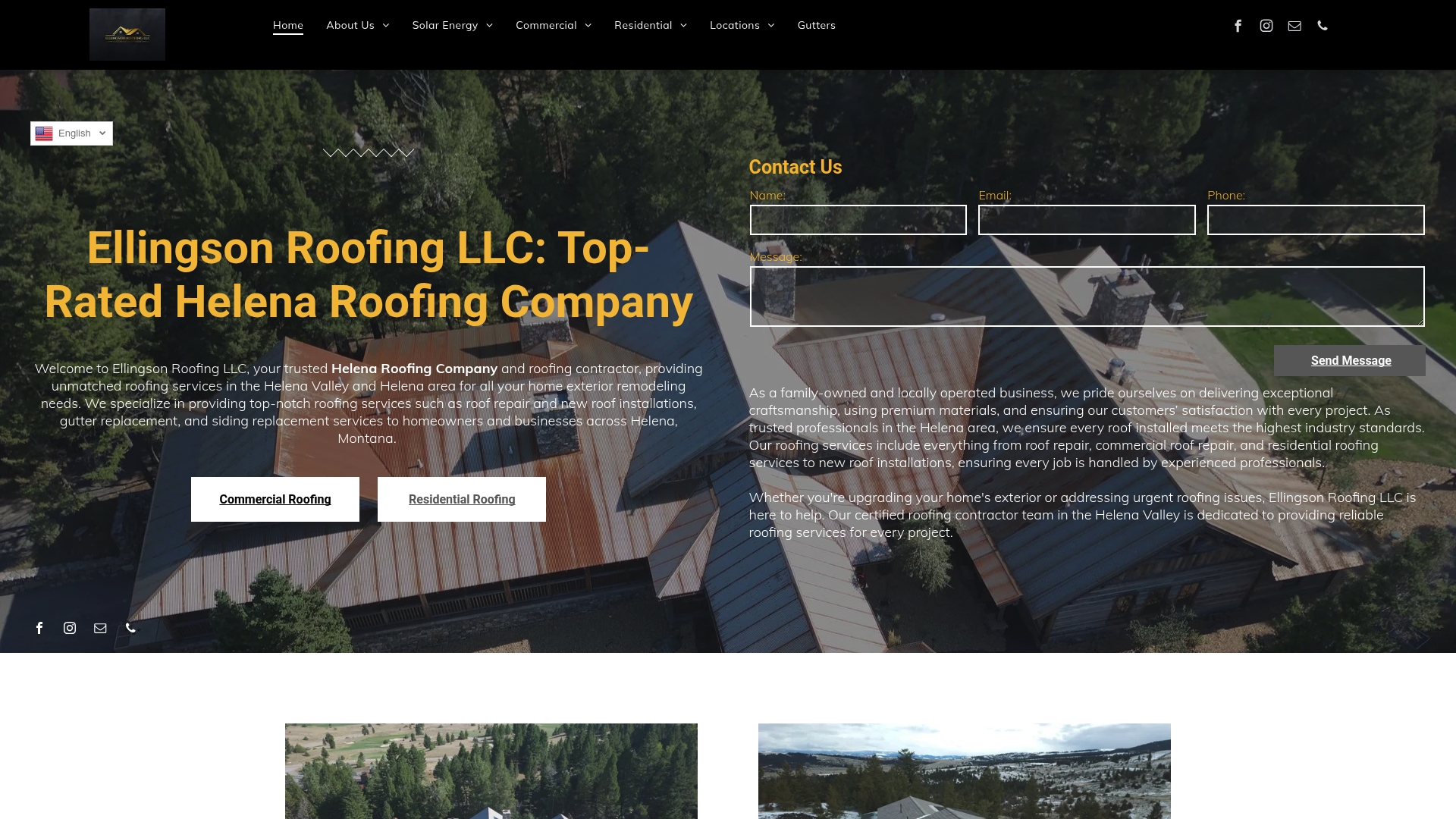
Take the first step toward a lower carbon footprint, unbeatable durability, and money-saving efficiency. Contact the Ellingson Roofing LLC team today for a free consultation in Helena. You can secure a roof that keeps you safe and sustainable for decades. Demand a smarter future for your property—reach out now and let us show you how easy it is to go green with metal roofing built for Montana.

